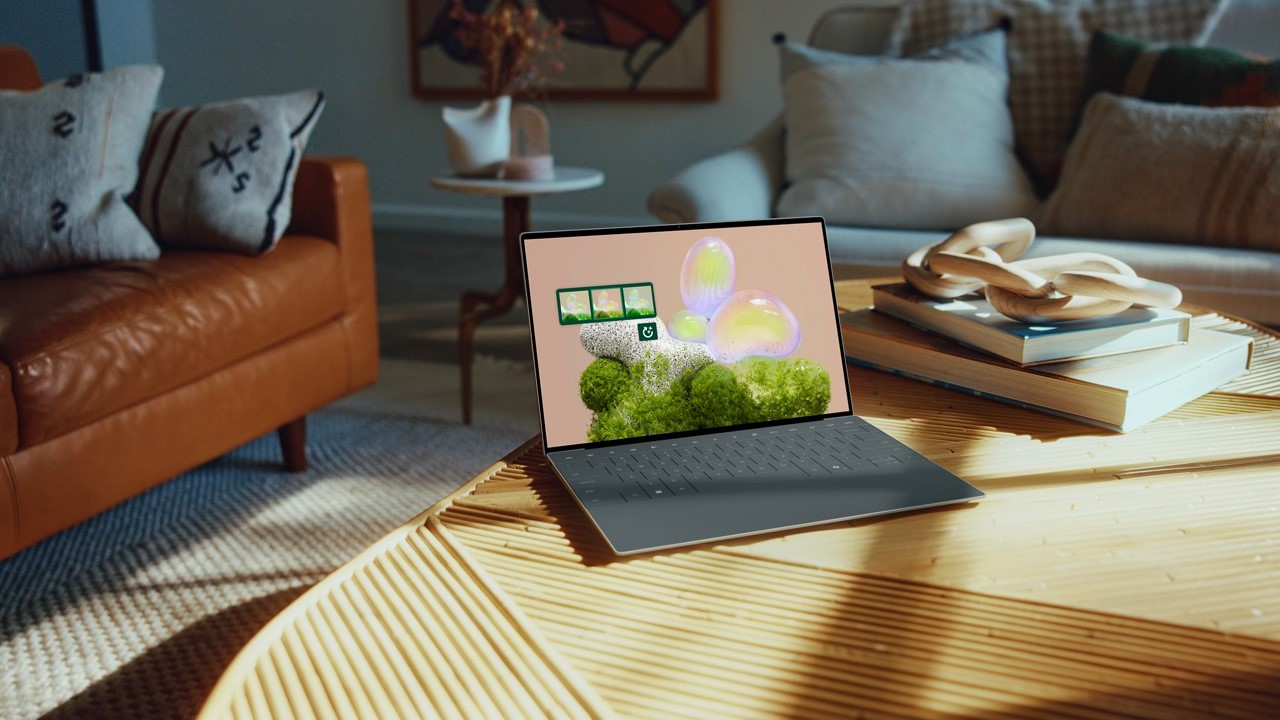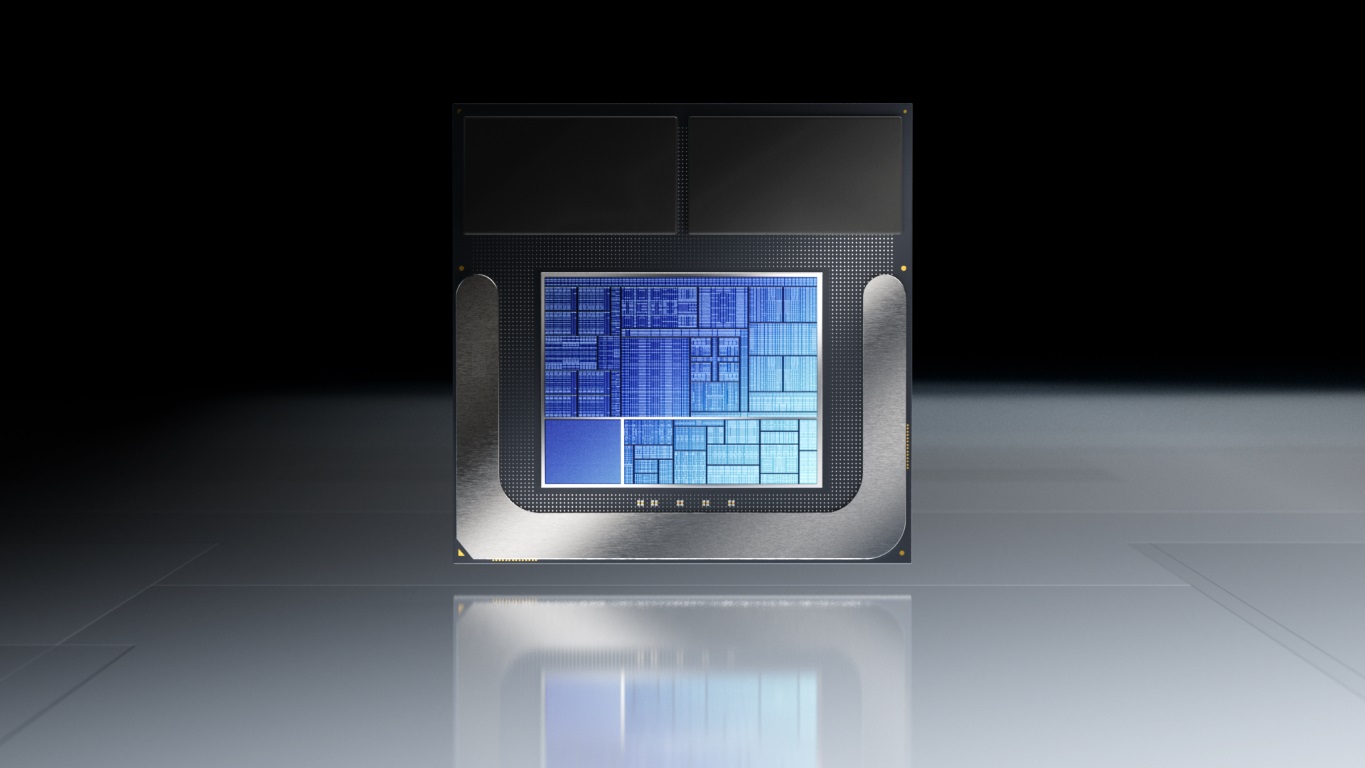Dell's new XPS 13 combines Intel Core Ultra Series 2 processors with one of the best features of the M4 iPad Pro
Dell just refreshed the XPS 13 with Intel's powerful and AI-focused Intel Core Ultra Series 2 processors.

What you need to know
- Dell just announced a refresh of its XPS 13 laptop.
- The flagship laptop is powered by the newly announced Intel Core Ultra Series 2 processors.
- The refresh means that consumers can now choose between an XPS 13 with the latest chips from Intel or Qualcomm, since the latter has its Snapdragon X Elite chips available in the XPS 13 as well.
Dell just unveiled the latest version of its XPS 13. The laptop is powered by the Intel Core Ultra Series 2 processors that were announced today. Those chips promise more power and better efficiency than their predecessors as well as an impressive 48 TOPS from a dedicated NPU. Those 48 TOPS make the XPS 13 one of the most powerful AI PCs on the market and will help with AI features such as generating text and photos and editing videos. The new XPS 13 with an Intel Core Ultra Series 2 CPU is available for preorder today with a starting price of $1,399.99.
This is the second refresh the XPS 13 has seen recently, though the previous update featured Qualcomm Snapdragon X series processors. Now, those who need the app compatibility of x86 chips or that just prefer Intel's offering have a way to get the latest XPS 13 with their chip of choice.
The XPS 13 saw a massive refresh in design spread across a few years. The PC now features a zero-lattice keyboard, a haptic trackpad, an edge-to-edge display, and a row of capacitive function keys. That design first appeared in the XPS 13 Plus but later became the standard look for the XPS 13 lineup.
Our piece comparing the XPS 13 (9345) vs. XPS 13 (9340) should give you a great look at the design of the PC. Of course, the newer model has an Intel Core Ultra Series 2 chip inside, so keep an eye out for more comparisons later this year.
One of the key differences between the Snapdragon-powered XPS 13 and its Intel-powered sibling has been that only the Snapdragon model was a Copilot+ PC. That will change with an update to XPS 13 with an Intel Core Ultra Series 2 processor. Dell only said that the Copilot+ experience will be supported when made available. Intel noted today that the Copilot+ update should roll out in November 2024, so there's a chance XPS 13 owners won't have to wait that long.
Dell XPS 13 | preorder starting at $1,399.99 at Dell
Featuring a newly announced Intel Core Ultra Series 2 processor, this XPS 13 combines the refined design of Dell's flagship laptop with the latest internals from Intel. It has 48 TOPS to drive AI features such as image generation and video editing. The refreshed XPS 13 is also available with a tandem OLED display.
Intel Core Ultra Series 2

With the design of the XPS 13 being the same as before, the star of the show is the Intel Core Ultra Series 2 chip inside. Intel just announced that processor, which promises up to 50% lower package power than the previous generation and up to 120 total platform TOPS (up to 48 TOPS from its NPU). The new processors feature rearchitected Performance-cores (P-cores) and upgraded Efficient-cores (E-cores).
The new Intel Core Ultra processors also have Xe2 graphics on board. Those graphics promise a 30% bump in average performance, according to Intel.
All the latest news, reviews, and guides for Windows and Xbox diehards.
"We’re all in on AI, and our advantage is strong with our comprehensive AI PC portfolio," said Dell President of Client Solutions Group Sam Burd. "Now, with the addition of the newest Intel Core Ultra processors, our selection of AI PCs offers even greater versatility with a focus on all-day battery life and improved graphics performance. From creators to everyday users, these advancements will help customers be more productive, save more time and do even more with their PC."
Qualcomm shook up the chip game this year with the release of its Snapdragon X Elite and Snapdragon X Plus processors. Now, Intel has responded with some direct comparisons to those Qualcomm chips. According to Intel, in a device made by the same OEM and in the same chassis, the Intel Core Ultra 7 268V beats the Qualcomm X1E-80-100 (a version of the Snapdragon X Elite).
| Header Cell - Column 0 | Intel Core Ultra 7 268V | Qualcomm X1E-80-100 (Snapdragon X Elite) |
|---|---|---|
UL Procyon Office Productivity | 20.1 hours | 18.4 hours |
Microsoft Teams 3x3 | 10.7 hours | 12.7 hours |
Intel also compared the Intel Core Ultra 9 288V to the Qualcomm X1E-78-100 (another variant of the Snapdragon X Elite) and the AMD HX 370 (Ryzen 9).
| Header Cell - Column 0 | Intel Core Ultra 9 288V | Qualcomm X1E-78-100 (Snapdragon X Elite) | AMD HX 370 (Ryzen 9) |
|---|---|---|---|
UL Procyon Office Productivity | 14 hours | 9.5 hours | 10.1 hours |
Microsoft Teams 3x3 | 9.9 hours | 9.4 hours | 8.2 hours |
We'll need to see real-world performance in testing by reviewers and general users to confirm Intel's claims. If the battery benchmarks are accurate, Intel will have struck back Qualcomm with a fierce blow when it comes to power and efficiency.
🎒The best Back to School deals📝
- 🕹️Xbox Game Pass Ultimate (3-months) | $29.99 at CDKeys (Save $20!)
- 🎮Lenovo Legion Go (Z1 Extreme) | $599.99 at Best Buy (Save $100!)
- 🎧Sony WH1000XM5 ANC Headphones | $329.99 at Best Buy (Save $70!)
- 🕹️Starfield Premium Upgrade (Xbox & PC) | $27.69 at CDKeys (Save $7!)
- 📺LG UltraGear OLED Curved Monitor 39 | $996.99 at Amazon (Save $503!)
- 💻HP Victus 15.6 Laptop (RTX 4050) | $599 at Walmart (Save $380!)
- 🕹️God of War: Ragnarök (PC, Steam) | $52.09 at CDKeys (Save $8!)
- 💻Lenovo ThinkPad X1 Carbon | $1,481.48 at Lenovo (Save $1,368!)
- 🎧Bose QuietComfort ANC Headphones| $249.00 at Best Buy (Save $100!)
- 🎮 Seagate Xbox Series X|S Card (2TB) | $229.99 at Best Buy (Save $130!)
- 🕹️Hi-Fi RUSH (PC, Steam) | $8.99 at CDKeys (Save $21!)
- 🖱️Razer Basilisk V3 Wired Mouse | $46.99 at Best Buy (Save $23!)
- 🖥️Lenovo ThinkStation P3 (Core i5 vPro) | $879.00 at Lenovo (Save $880!)
Tandem OLED display

CPU: Up to Intel Core Ultra 9
Graphics: Intel Arc
NPU: 48 TOPS
RAM: Up to 32GB LPDDR5x
Storage: Up to 2TB SSD at launch (4TB post launch)
Display: 13.4-inch (up to 2880x1800)
Connectivity: Wi-Fi 7 & Bluetooth 5.4
Ports: 2x Thunderbolt 4 USB-C
The latest model of the XPS 13 is an internal refresh of its CPU to the latest model from Intel. You'll probably see some marketing material that discusses things like the XPS 13 being the first laptop with a tandem OLED display. That is accurate, but the Intel Core Ultra Series 2 model of the XPS 13 does not have an exclusive claim to that tandem OLED display.
The Snapdragon X Elite version of the XPS 13 also has a tandem OLED display. But my guess is that people who need an Intel processor in their laptop may have ignored the Snapdragon X Elite version of the PC, so it's worth highlighting the impressive specs that the latest XPS 13 delivers.
Regardless of the CPU you choose, any model with a tandem OLED screen promises higher brightness than normal OLED panels. Tandem OLED screens stack two layers on top of each other to increase brightness while also improving power efficiency. Apple's M4 iPad Pro made more people aware of tandem OLED technology, but we'll see the screens on more devices in the future from a range of companies, including Dell's new XPS 13.

Sean Endicott is a news writer and apps editor for Windows Central with 11+ years of experience. A Nottingham Trent journalism graduate, Sean has covered the industry’s arc from the Lumia era to the launch of Windows 11 and generative AI. Having started at Thrifter, he uses his expertise in price tracking to help readers find genuine hardware value.
Beyond tech news, Sean is a UK sports media pioneer. In 2017, he became one of the first to stream via smartphone and is an expert in AP Capture systems. A tech-forward coach, he was named 2024 BAFA Youth Coach of the Year. He is focused on using technology—from AI to Clipchamp—to gain a practical edge.

